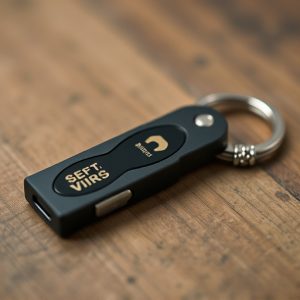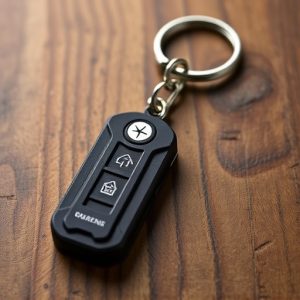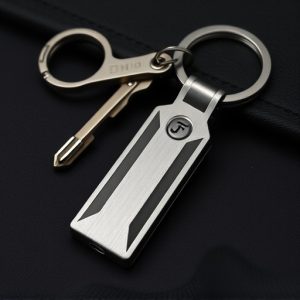Keychain Safety Devices: Legal Requirements & Women’s Protections Check
Hidden keychain protection tools offer innovative personal security solutions tailored for women…….
Hidden keychain protection tools offer innovative personal security solutions tailored for women's safety concerns. Legal landscapes vary globally, with some jurisdictions allowing their use only if meeting specific safety standards while others restrict or ban them entirely. To ensure accessibility and effectiveness, manufacturers, distributors, and users must understand these legal requirements, promote responsible use, and address misconceptions about the tools' intended purpose, considering their small size. Implementers should research local laws, cater to female users' needs, prioritize safety through testing, educate users on consent, and provide training for responsible use.
In today’s world, personal safety is paramount, especially for women who often carry a myriad of items securing their belongings. This article explores the crucial topic of keychain safety device legal requirements, with a focus on hidden protection tools designed specifically for women’s needs. We navigate the legal landscape, highlighting protections in place and offering a practical checklist for implementers to ensure compliance. Discover how these innovative devices can empower women while adhering to relevant regulations.
- Understanding Keychain Safety Devices: The Legal Landscape
- Women's Specific Needs and Legal Protections
- Ensuring Compliance: A Practical Checklist for Implementers
Understanding Keychain Safety Devices: The Legal Landscape
Keychain safety devices, often called hidden protection tools, are an innovative solution for personal security, especially for women who frequently face concerns about their safety while on-the-go. These tiny yet powerful tools offer a discreet way to protect oneself in various situations. However, navigating the legal landscape surrounding these devices is essential to ensure they remain accessible and effective.
Different jurisdictions have varying regulations when it comes to personal defense tools, including keychain protection devices. Some regions may allow their use for self-defense only if they meet specific safety standards, while others might restrict or ban them entirely. Understanding these legal requirements is crucial for manufacturers, distributors, and users to ensure compliance and promote the responsible use of such tools. This is particularly important for hidden keychain protection tools, as their small size can sometimes lead to misunderstandings about their intended purpose.
Women's Specific Needs and Legal Protections
In today’s world, women often face unique security challenges, and this is where hidden keychain protection tools can play a vital role in addressing specific needs. These innovative devices are designed to offer discreet yet powerful safety measures tailored for women’s personal well-being. Many of these tools incorporate advanced features like emergency alarm systems, GPS tracking, and automatic alert notifications, ensuring that help can be summoned swiftly in case of any danger.
Legal protections surrounding such devices vary across regions, but many countries have recognized the importance of empowering women with these hidden keychain protection tools. As a result, there are now laws in place that not only legalize their use but also encourage manufacturers to incorporate advanced safety features. This legal recognition is a significant step towards fostering a safer environment for women and promoting the adoption of technology that can save lives.
Ensuring Compliance: A Practical Checklist for Implementers
Implementing hidden keychain protection tools for women is a proactive step towards ensuring personal safety, but it’s crucial to navigate legal requirements to avoid any potential pitfalls. Here’s a practical checklist for implementers to ensure compliance:
1. Understand Local Laws: Research and familiarize yourself with regional legislation regarding hidden self-defense devices. Some areas have specific regulations on the type, size, and carry of such tools, particularly for non-lethal options like keychains. Ensure the device falls within legal boundaries to prevent any legal complications.
2. Target Audience Considerations: Keep women’s unique needs in mind when choosing a keychain protection tool. Features like discreteness, ease of use, and reliability are paramount. Products designed specifically for women often incorporate these considerations, making them more appealing and effective.
3. Safety Testing: Only implement devices that have undergone rigorous safety testing to ensure they function as intended and don’t cause harm during unexpected situations. Look for certification from reputable organizations to guarantee quality and safety standards.
4. Informed Consent: Since these tools are hidden, clarify that their purpose is for personal protection and not to infringe on privacy. Ensure users understand the device’s functionality and limitations, promoting responsible usage.
5. Training and Support: Provide resources or training sessions to educate women on using the keychain protection tools effectively. This includes demonstrations on activation and any necessary follow-up actions after deployment.
In conclusion, understanding the legal requirements for keychain safety devices is paramount in ensuring the protection of women’s personal security. By implementing practical measures outlined in this article, from recognizing specific needs to navigating the legal landscape, individuals and organizations can play a crucial role in empowering women with hidden keychain protection tools. Staying informed and compliant is essential to creating a safer environment for all.


